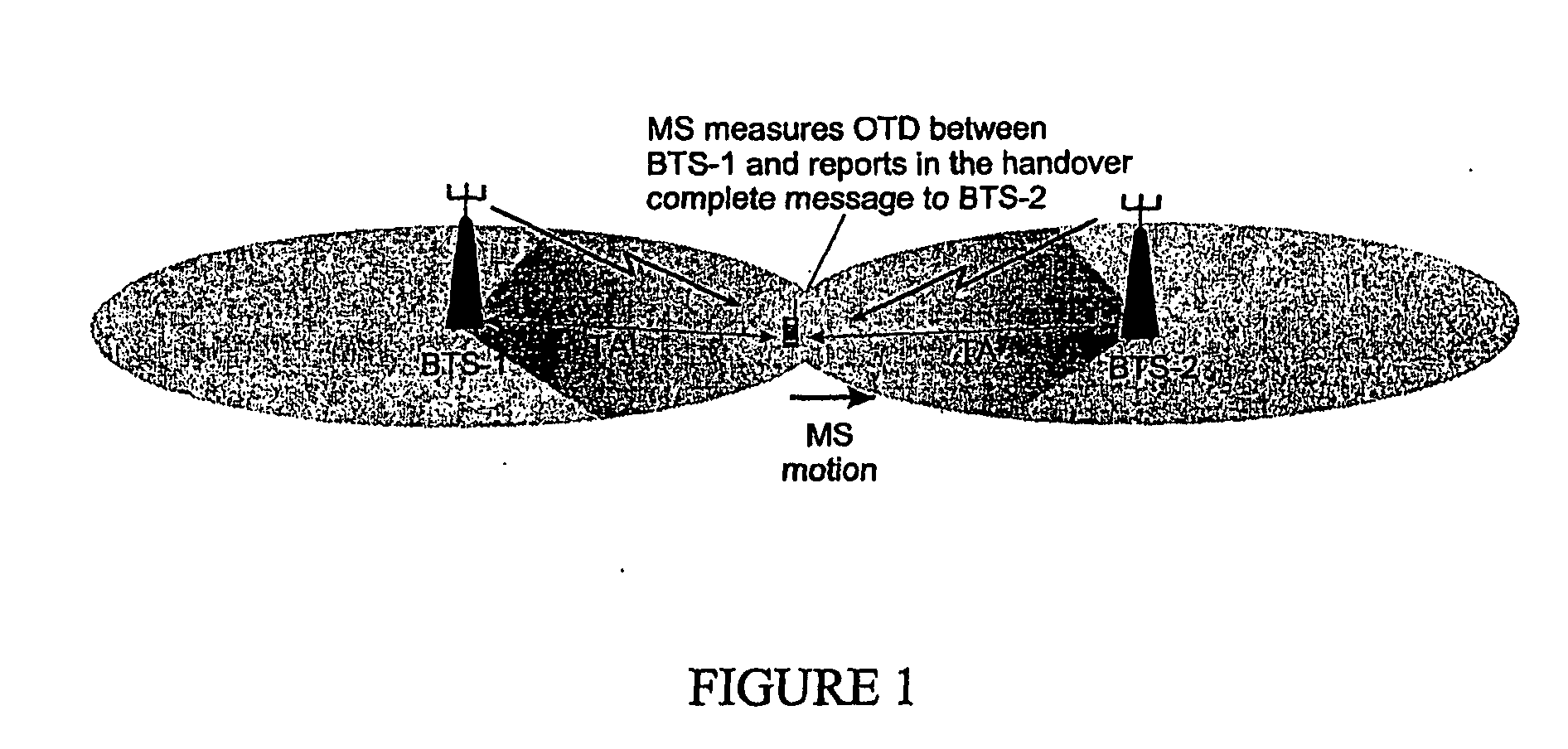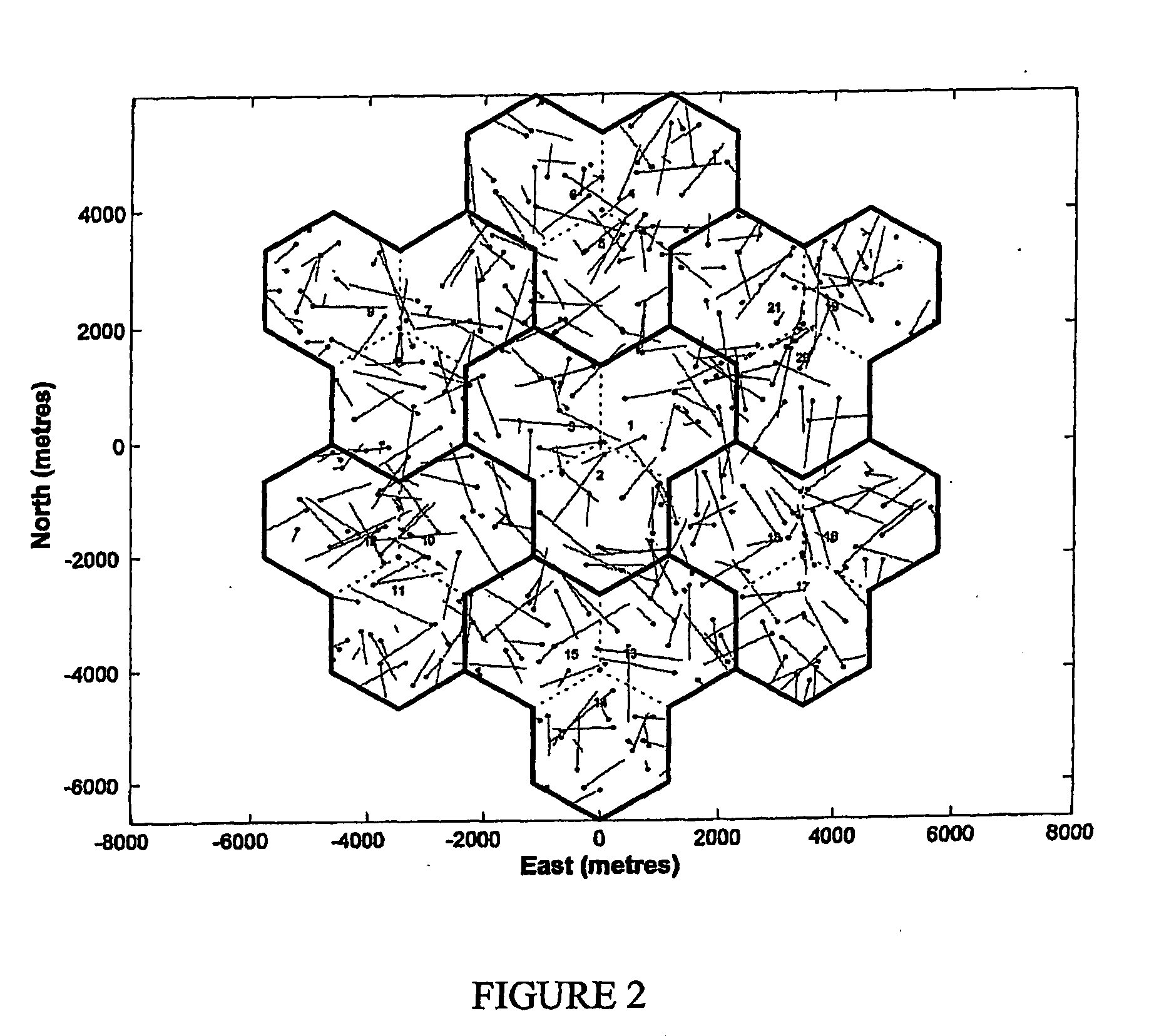Radio Mobile Unit Location System
a mobile unit and location system technology, applied in the field of radio mobile unit location system, can solve the problems of system complexity, system cost, and certain geographically dispersed elements within the cellular network that must be synchronised or pseudo-synchronised, and achieve the effect of reducing the cost of lmu deployment, ensuring accuracy, and ensuring the accuracy of e-otd type systems
- Summary
- Abstract
- Description
- Claims
- Application Information
AI Technical Summary
Benefits of technology
Problems solved by technology
Method used
Image
Examples
Embodiment Construction
[0068]The present discussion will use the GSM system to provide a concrete example but applies equally to GPRS and UMTS. The objective is to determine (without expensive LMU deployments) the relative time differences between a pair of clocked network elements such as BTSs. The time difference between BTSs is commonly referred to as the Real Time Difference (RTD). These time differences typically vary slowly over time, and therefore this is an ongoing process, the estimates have to be updated at appropriate intervals.
[0069]In the following description, there will be described a number of ways in which this synchronisation can be achieved. Networks differ in terms of the handset capabilities as well as the operator's preference for incorporating enhancements. The variety of ways presented herein enables an operator to select a technique that minimises the impact on the handsets and the network and their cost.
Handover Based Synchronisation Using OTD and TAs
[0070]The basis of this metho...
PUM
 Login to View More
Login to View More Abstract
Description
Claims
Application Information
 Login to View More
Login to View More - R&D
- Intellectual Property
- Life Sciences
- Materials
- Tech Scout
- Unparalleled Data Quality
- Higher Quality Content
- 60% Fewer Hallucinations
Browse by: Latest US Patents, China's latest patents, Technical Efficacy Thesaurus, Application Domain, Technology Topic, Popular Technical Reports.
© 2025 PatSnap. All rights reserved.Legal|Privacy policy|Modern Slavery Act Transparency Statement|Sitemap|About US| Contact US: help@patsnap.com



